How Long Do Cats Live? A Complete Guide on Cats’ Lives
Everyone has heard the phrase “cats have nine lives.” If you believe it to be true, get ready for some disappointing news: cats only have one life like the rest of us.
Cats can be a great support system in times of need – Click the button below.
I know—it’s quite a shock. But pet owners ought to know everything about their beloved furry friends, which is why in this guide, we’ll take an in-depth look at cats’ lives.
We will focus on including their life expectancy, the health issues that shorten their lifespans, discussion about how long do cats live at home, and everything in between. If you’re here for all the information, you can get about cats’ lives, then count yourself lucky because we’ve covered everything you need to know.
Without further ado, let’s dive in!
Table of Contents
Chapter 1: What is the Average Lifespan of a Cat?
So, if your cat only has one life, how long does it last? I’m sure many pet owners worried about losing their furry friends ask this question.
This chapter will talk about the most frequently discussed myths and aspects of cats’ lives. We shall touch on cats’ average lifespan and then look at why some cats live longer than others.
Let’s get started.
How long do cats live?
On average how long do cats live? Cats tend to live longer than dogs. On average, a healthy cat can easily live for up to 14 or 16 years. The main factor that affects their lifespan is the breed. Take a look at the information below:
- The American Bobtail lives for 13 to 15 years.
- The Abyssinian breed lives for 9 to 15 years.
- Himalayan cats can live for well over 15 years.
- The Sphinx cat lives for 13 to 15 years.
- Persian cats live to be older than 15 years.
- Munchkin cats live for 12 to 14 years.
- Bengal cats live for 12 to 16 years.
- The Egyptian Mau cat can live for 13 to 16 years.
Believe it or not, these are just average lifespans for cats. As you might have guessed, some live much longer than 16 years. For instance, the following breeds are known for their impressively long lifespans:
- The Russian Blue, which lives for 15 to 20 years
- Siamese cats, which live for 12 to 20 years
- Ragdoll cats, which live for 15 to 18 years
- Savannah cats, which live for 12 to 20 years
In the next chapter, we will compare the lifestyle of indoor cats with that of outdoor cats.
Stay mentally fit with your ESA pet! – Click the button below.
Chapter 2: Indoor Cats and Outdoor cats: What’s the Difference?
Lifestyle has a great impact on lifespan. That is especially true when it comes to cats, dogs, and other pets.
A healthy lifestyle means less exposure to diseases, a good diet, and regular medical attention. Conversely, an unhealthy lifestyle exposes cats to diseases, injuries, and starvation.
Therefore, we can safely assume that a cat’s lifespan greatly depends on the kind of lifestyle. That means indoor cats tend to live longer than outdoor cats because their lifestyles are vastly different.
The Life of an Indoor Cat
Indoor cats live longer than outdoor cats. That’s expected because they live a very sheltered life where they can access adequate nutrition, healthcare, and protection from the outdoor elements and predators.
To break it down, here’s why indoor cats generally live longer:
-
They’re not likely to get hit by a car
Indoor cats aren’t likely to get hit by a car because they spend most of their lives indoors. Even when they go outside, which they occasionally do, they are heavily protected by fences and their owners’ rapt attention.
Therefore, indoor cats are less likely to die from a car accident.
-
They’re less likely to eat poisonous food
Pet owners generally take great care to avoid leaving toxic substances within reach of their cats. Therefore, indoor cats are a lot less likely to die or suffer illness from ingesting toxins.
Some of the toxins they are exposed to outside include rat poison, antifreeze, insecticides, paints, fertilizers, spoiled food, and poisonous plants.
-
They’re less likely to encounter predators and feral animals
Animal fights are a huge contributor to premature animal deaths. When cats live outside, they are likely to get involved in dangerous fights with other cats, dogs, and wild animals like ferrets.
Even if they don’t die in a fight, they can sustain bad injuries that fester and become infected, leading to sickness and, eventually, death.
-
They typically get a balanced diet
Indoor cats enjoy a richer diet with all the nutrients they need to grow and live healthy lives. Like humans, they depend on a quality diet to remain healthy, which is why outdoor cats that don’t enjoy the same nutritional privileges tend to fall sick and die sooner than indoor cats.
Indoor cats also have the added advantage of human roommates, who are well aware of their nutritional necessities, and therefore provide all the care they need to live healthy lives.
-
They get regular health checks
Indoor cats rarely die from diseases. That’s because they receive regular health check-ups, which means they don’t often get sick.
That’s more than can be said about outdoor cats, which are often left to deal with a long list of potentially life-threatening diseases. Outdoor cats live a very rough life, which we discuss in the following section.
The Life of an Outdoor Cat
Cats that live outside go through a very rough existence. Generally speaking, their lives are rarely pleasant as they have to fend for themselves and survive very harsh living conditions.
Outdoor cats face the following challenges:
- Diseases
Outdoor cats are more likely to get sick as they’re exposed to a lot of infectious diseases. Some of these diseases are easily treatable, but since they have no one to take care of them, these cats end up dying from them.
Remember that some of these diseases are incurable and highly infectious (feline immunodeficiency virus, for instance), so outdoor cats stand little chance of survival when they contract them.
- Harsh living environments
Living outside is no walk in the park for a cat. Outdoor cats have to deal with unforgiving weather, which is one of the main reasons they fall sick.
While most of these cats know how to survive outside (they can find shelter in virtually anything), they’re still not impervious to the perils of outdoor living. During the summer, the extreme heat can lead to severe dehydration and heatstroke, and in the winter, the cold leaves many of them with little to eat.
Book an Appointment by clicking the banner below.
- Animal cruelty
Unfortunately, one of the reasons why outdoor cats don’t live for very long is humans. Animal cruelty is rampant, and these outdoor creatures are often the target of torture and exploitation.
- Wild animals
Outdoor cats share their habitat with dangerous wildlife like bears, foxes, coyotes, and wolves. These animals are far more powerful (and feral) than them, so a chance encounter with any of them often spells death for outdoor cats.
- Accidental motor deaths
During the cold season, outdoor cats may seek refuge inside the cars’ bonnets because the engine block offers them some warmth. Sadly, many of these cats end up dying or sustaining severe injuries when the drivers unwittingly turn on their engines without first checking it out.
As you can see, outdoor cats have to do a lot just to survive. Their lives are filled with challenges and hardships that harm them or end up killing them.
That doesn’t mean that you shouldn’t let your cats out ever, no. Cats LOVE playing outside. Letting your cat out every once in a while is highly recommended. Allow them to explore their surroundings as it gives them more confidence to roam around and still find their way home.
However, do not let your cat out and leave them for extended periods of time. They can easily get lost or fall victim to one of the hazards that we’ve mentioned above.
Chapter 3: Health issues that may shorten a cat’s lifespan
Cats are susceptible to a lot of bad diseases. Some of them are deadly, while others greatly reduce their comfort, making their lives miserable.
In this chapter, we’ll look at the health issues that may shorten a cat’s lifespan.
-
Kidney disease
Cats can develop chronic renal failure, just like humans. Kidneys are vital organs, so when they fail, the results can be catastrophic. If your cat has kidney problems, you will notice the following signs and symptoms:
- Severe weight loss
- Lethargic behavior
- Bad breath
- Poor hair quality
-
Diabetes
Did you know that around 1 % of the general cat population suffers from diabetes?
Like humans, cats can suffer from type I and type II diabetes and experience the same symptoms. One of the telltale symptoms of either type of diabetes is severe weight loss.
-
Leukemia
Feline leukemia is one of the most common illnesses affecting cats. In the United States, it affects roughly 2 – 3% of the feline population.
Are you feeling emotionally unstable? The best emotional support cats would help you! – Click the button below.
-
Hyperthyroidism
An overactive thyroid gland can lead to a condition known as hyperthyroidism. This condition causes your cat to have frequent urination symptoms, a decreased appetite, and weight loss. If you notice these symptoms, talk to a vet immediately.
-
Eye issues
Cats can develop eye problems from injuries and illnesses like keratitis, which are caused by viruses. Eye problems usually manifest as redness, swelling, and ocular discharge, which should be referred immediately to a veterinarian.
-
Diarrhea
Cats can get diarrhea due to changes in their diet, allergies, and other illnesses.
-
Fleas
Constant scratching is a sign of flea infestations in your cat. If they’re constantly scratching and biting at their coats, then it’s time to wash them with the appropriate shampoo.
-
Vomiting
Cats vomit for a lot of reasons. The most common one is because of hairballs (we’ll discuss this later on). Still, they can also vomit after eating toxic or inedible substances, after getting infected, and after suffering a urinary tract disease.
-
Arthritis
Cats that suffer from arthritis typically experience symptoms like lameness and lethargy. However, you will know it’s arthritis when you discover stiffness and swelling in their joints.
-
Dental Disease
The three most common dental diseases affecting cats are gingivitis, peritonitis, and tooth resorption. Although rarely life-threatening, these diseases can cause severe pain and discomfort.
-
Obesity
A cat that is 20 % heavier than its recommended body weight is considered to be obese. Obesity is quite a problem for domesticated cats as they’re often overfed and don’t get enough exercise.
Chapter 4: The Different Stages of a Cat’s Life
Whether you’re thinking of getting a cat or already own one, you must know this is one of the crucial things you must know.
Cats’ lives can be separated into several distinct stages. Knowing when they hit different stages will help you better understand their diet needs, the problems that affect them, and their lifestyle requirements.
Stage 1: Kitten (0 – 6 months)
In their developmental stage, cats are known to be notoriously playful. During this phase, they undergo several changes:
- Their appearance – Kittens are easy to spot because they’re often small and very adorable. Their fur is often coarse and sparse, and their bodies are very tiny. They will also have much shorter ears and tails for the first six months of their lives.
- Training – Kittens are lightning-fast learners. Within the first few months, they learn how to run around, jump, and scale tall things. Out of curiosity, they emulate their mother’s actions, so they’re self-trained by the time they’re a couple of months old. You’ll have to be patient for them to learn potty training and how to get along with other cats, which may take a few days or weeks.
- Behavior – Kittens are inquisitive creatures. They love to explore everything around them. While it’s charming behavior, you should keep an eye out for them as they explore because their curiosity often overwhelms their sense of safety.
Stage 2: Junior (6 – 24 months)
A junior cat is equivalent to a human adolescent. At this stage, cats start to develop physical and sexual maturity.
Even though they’re just as playful, they’re a little more somber now and can even get moody in some instances.
That’s why cats in the junior stage are similar to human teenagers.
Don’t wait anymore – Get your ESA letter in a few easy steps!
In this stage:
- Their appearance – They will remain skinny, although their bodies will grow in size (length).
- Training – This stage entails teaching them how to live with humans. This is the time to create and reinforce boundaries. At this stage, cats are only starting to develop their hunter urges, so you need to teach them what they can bite, chase, and scratch and what they shouldn’t. At this stage, you might want to get them a few toys.
- Behavior-wise – Cats start acting like adult cats at this stage. That means they’re a lot less friendly, so you shouldn’t antagonize them or encourage them to hurt you—because they will.
Stage 3: Prime (3 – 6 years)
A cat at its prime is equivalent to a human being in their 20s and 30s. When they get to this stage healthy, then they’re likely to live a full life.
Cats are still quite active in their prime. Their characteristics are as follows:
- Their appearance – They should have a smooth and shiny coat and a well filled out body in their prime. Of course, that will depend on how well they’re fed and groomed.
- Training – At this point, training will be more or less complete. The cat should know how to behave appropriately around people. Still, they may occasionally fall out of character and do something that tests the boundaries of your relationship. It shouldn’t concern you unless they keep up the bad behavior. If they do, it could be a sign of an underlying medical condition.
- Behaviour – Your cat will have the temperament of an adult cat when they reach this stage. This personality will remain theirs for the rest of their lives.
Stage 4: Mature (7 – 10 years)
When they hit maturity, cats stop being as playful and mobile as they used to be. This stage is mostly marked by prolonged hours of sleeping and eating. You can expect the following characteristics:
- Their appearance won’t differ much as they’ll still look like a cat in their prime. However, at this stage, they’re highly susceptible to unhealthy weight gain.
- Training at this stage will mostly involve getting them used to physical activity. It is important to get them used to a mobile life. The more they walk, run, and play, the less likely they become obese and suffer illnesses like high blood pressure.
- Behaviour – Your cat is likely to switch to a sedentary lifestyle when they hit maturity. They’re not that different from humans in their 40s and 50s.
Book an Appointment by clicking the banner below.
Stage 5: Senior (11 – 14 years)
Cats that make it this far are equivalent to humans in their 60s and 70s. Your cat is geriatric at this stage, so treat them with the same gentleness and care as you would your elderly relatives.
Here’s how they change at this stage:
- Appearance – Their coats start to lose their luster (shininess) and start to develop more grey hairs. Their skin also becomes thinner and looser.
- Training – Remember the adage that says, “you can’t teach an old dog new tricks?” Well, it applies to cats too. At this stage, you’ll have to be on your toes as far as their grooming and healthcare is concerned. Get their nails trimmed regularly, get their fur shortened, and take them for regular health check-ups. Senior cats may suffer from many diseases, so it is important to look out for strange symptoms.
- Behavior – Cats in their seniority love nothing more than to cuddle up and fall asleep. If all you want is limitless cuddles, this is the perfect stage for you. However, bear in mind that you’ll need to break them out of this lazy lifestyle every so often so that they can get some.
Chapter 5: Tips for Extending your Cat’s Lifespan
Before you can adopt a cat, you have to come to terms with the reality of the situation: you will most likely outlive your cuddly best friend, and there’s not much you can do about it.
What you CAN do is extend your cat’s life so that you get more years with them. This chapter will talk about the things you can do to help your cat live a long, happy, and healthy life.
It is easy to get your hands on an ESA letter. Get yours now by clicking the button below.
Tip #1: Prevent hairballs
Why do cats get hairballs?
It’s simple: when they groom themselves by licking their fur, some of it gets stuck on their tongue, and it eventually accumulates in their esophagus.
With time, they have to expel this hair, a process you’ve probably witnessed as severe gagging and the vomiting of a ball of hair. The good thing is that this unsightly process can be avoided.
Give your cats proper grooming so that they don’t have to do it themselves. Cats are notoriously hygienic creatures, so they always want to look their best. If you can’t handle the grooming, some professionals are trained to do it, so there’s no excuse to let your cat struggle with hairballs.
Tip #2: Keep them indoors
Outside is no place for a house cat. Sure, you can allow them the occasional excursion while hunting or frolic in nature, but don’t leave them outside for extended periods.
How long do indoor cats live? Definitely longer than the ones living outdoors.
We’ve already seen just how dangerous it is for outdoor cats, and these dangers can be just as big of an issue for indoor cats that are left without supervision.
If you must go outside, make sure that your cat is never unattended.
Tip #3: Provide adequate nutrition
A cat that receives a balanced diet and is fed regularly will live a long, happy life. Food is a contentious issue when it comes to pet owners, particularly cats.
Dry food is frowned upon because it is high in carbs, low in animal-based proteins, and has very little water content.
Usually, it is often highly processed, so cross-contamination is a real danger that you could be exposing your cats too.
Best cat food for indoor cats as well as outdoor cats
Therefore, best food means wet food, whether canned or prepared at home. It contains far more nutrients and will not leave the cat feeling dehydrated or malnourished.
Tip #4: Visit a dentist regularly
Dental hygiene is important for all creatures, not just humans. Occasionally, you should take your cat to a dentist or a veterinarian to get their teeth checked.
Remember, if there’s something wrong with their teeth, your cats won’t eat or sleep properly. If you don’t have the time to visit a specialist, make sure you regularly brush your cat’s teeth.
Tip #5: Consider spaying or neutering your cat
Spaying or neutering your cat is one way to avoid feline infectious diseases, which it may acquire when it mates with other cats.
Some people may see it as cruel, but by spaying or neutering your cat, you’re protecting them from many vices.
For instance, cats tend to be very hormonal during the mating season, and they will do everything to escape the house in search of a mate. This inadvertently leads to catfights, in which your pet may be seriously injured.
Tip #6: Hydration is important
Cats are extremely picky drinkers. They often don’t drink pure water, especially if it smells putrid or is in a dirty container. Therefore, you have to ensure that they have a readily available supply of cool water in clean, odorless containers because otherwise, they can easily become dehydrated.
Tip #7: Exercise is even more important
Humans are not the only ones that must be forced to exercise. When they hit maturity and seniority, cats become lazy bums that just want to sleep all day. If you want to avoid obesity and high blood pressure issues, you must make your cats exercise.
Chapter 4 shows how cats lose their mobility once they hit maturity (7 – 11 years). It is during this stage that they start to gain weight too. Along with these signs, they also become significantly more stubborn.
Getting them to exercise will not be easy, that’s for sure.
That’s why you must train your cat to be active during the earlier stages of their life. Exercise affects cats, much like it affects humans. It keeps them fit and prevents old-age problems like arthritis. It also prevents unhealthy weight gain, which can lead to obesity.
An ESA pet can improve your lifestyle – Click the button below.
An obese cat doesn’t move very well and is more likely to develop bone problems due to the pressure their overweight body exerts on their musculoskeletal structure.
A little exercise can go a long way in extending your cat’s lifespan.
Chapter 6: Legendary Cats That Lived Incredibly Long Lives
So far, we know that cats’ life spans are affected by their breed and lifestyle. We’ve even seen that some breeds live longer than others, possibly due to genetic advantages.
Now we venture into the cat hall of fame—a list of cats that defied all odds to live extra-long lives (over 25 years). These legends are:
Sarah (1982 – 2015)
- Age: 33 years and six months
- Origin: New Zealand
- Breed: Unknown
- Owner: Fleur Ford
Sarah lived long enough to make it into the Guinness Book of World Records as the longest living cat. Unfortunately, she passed on a few days later.
Grandpa Rex Allen (1964 – 1998)
- Age: 34 years and two months
- Origin: United States
- Breed: Devon Rex & Sphynx
- Owner: Jake Perry
Grandpa Rex Allen also lived long enough to make it into the Guinness World Records in 1998 as the longest living cat. Jake Perry has a reputation for raising long-lived cats.
Creme Puff (1967 – 2005)
- Age: 38 years and three days
- Origin: United States
- Breed: Tabby mix
- Owner: Jake Perry
Creme Puff made it into the Guinness World Records in 2010 as one of the oldest cats, following Grandpa Rex Allen’s footsteps. The common denominator is their owner, Jake Perry.
Lucy (1972 – 2011)
- Age: 39 years
- Origin: South Wales
- Breed: Tabby
- Owner: Bill Thomas
Being born when gasoline was 33p a gallon, Lucy’s age was equivalent to 172 human years. She was clearly a veteran.
An Emotional Support Animal is more than a pet – Click the button below.
The Takeaway
Cats are amazing creatures that give us companionship and protection from rodents and other pests. Their lifespan is about 15 – 20 years, but it can be extended with the right care.
We’ve seen just how crucial the lifestyle of a cat is to its lifespan. Outdoor cats generally live shorter lives because of all the dangers they are exposed to. Indoor cats can also die early if they don’t receive the appropriate care and nutrition.
We’ve also touched on some important tips on how you can extend your cat’s lifespan, how to train them, and the type of behavior you can expect from them during different stages of their lives.
Last but not least, we’ve seen that some cats can live well over 30 years with the right care. This guide teaches you all you need to know to give your cat the long life he/she deserves. By following the tips provided here, you can also get into the coveted hall of fame.
Get your Emotional Support Animal Letter today by booking an appointment at ESACare.


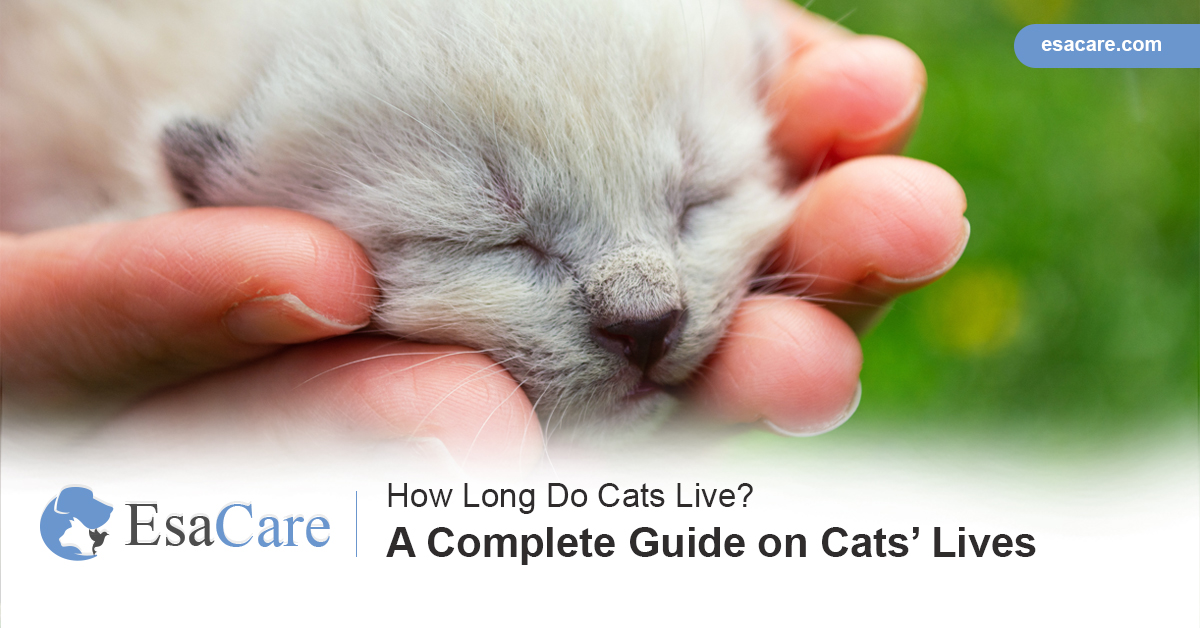

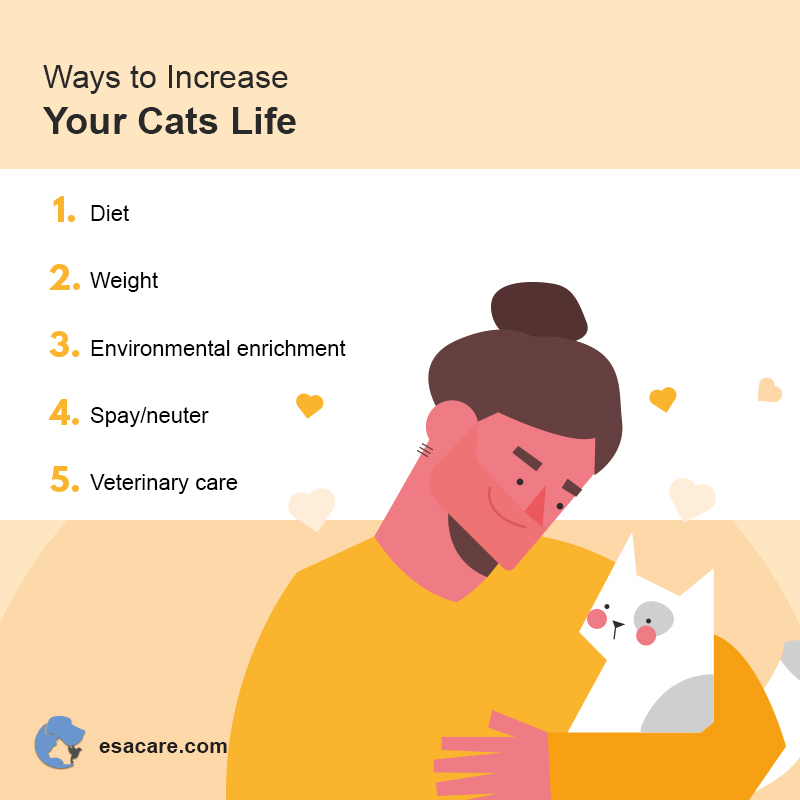

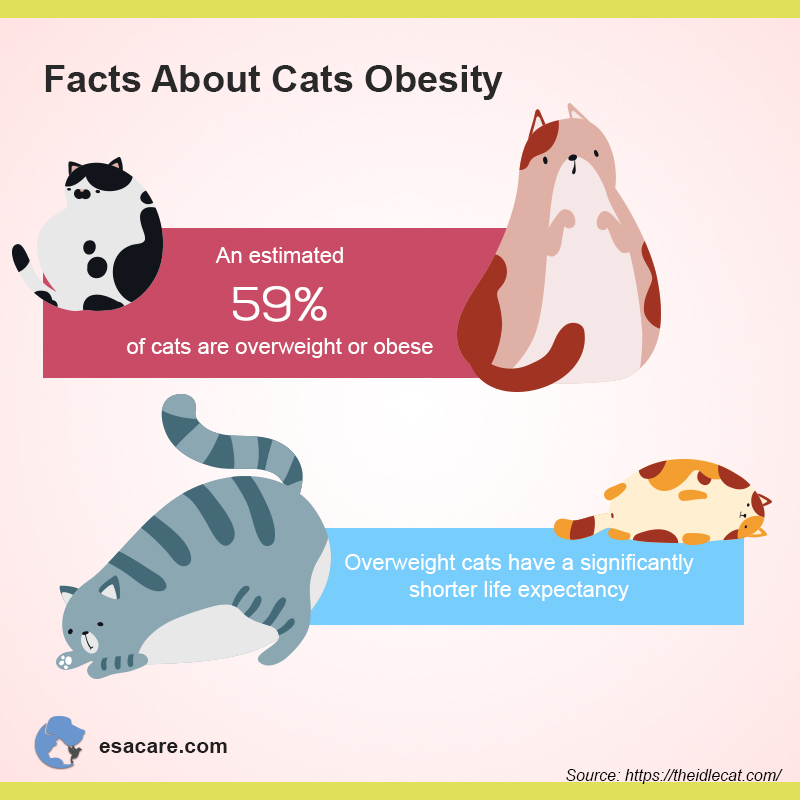
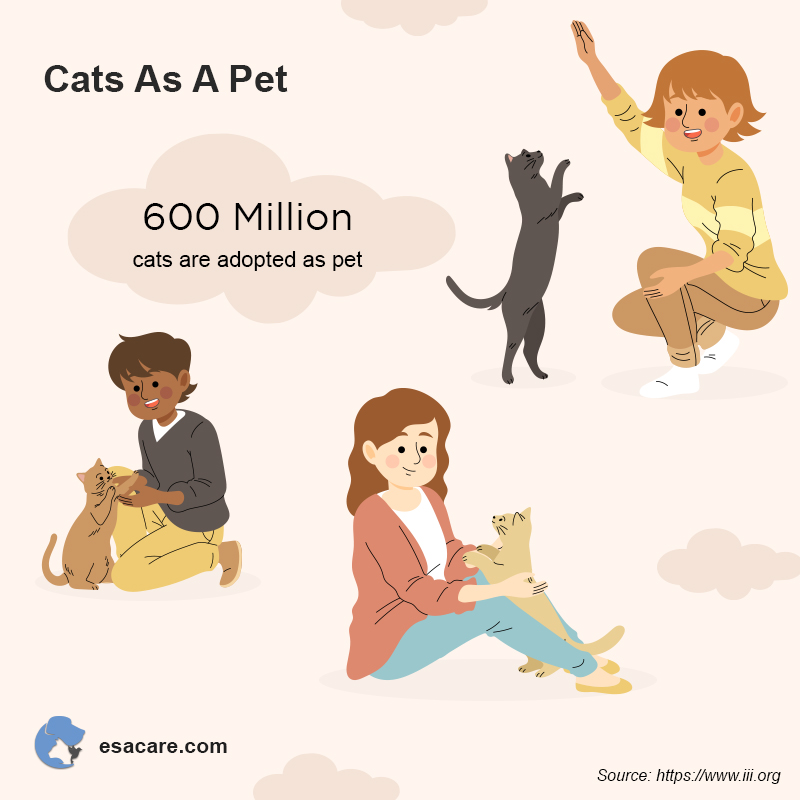
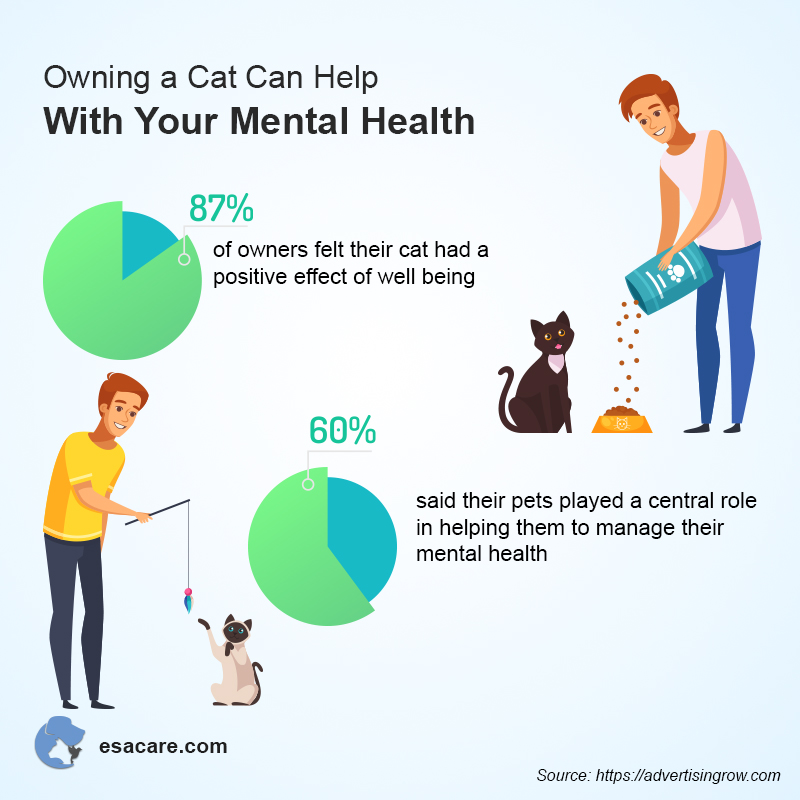
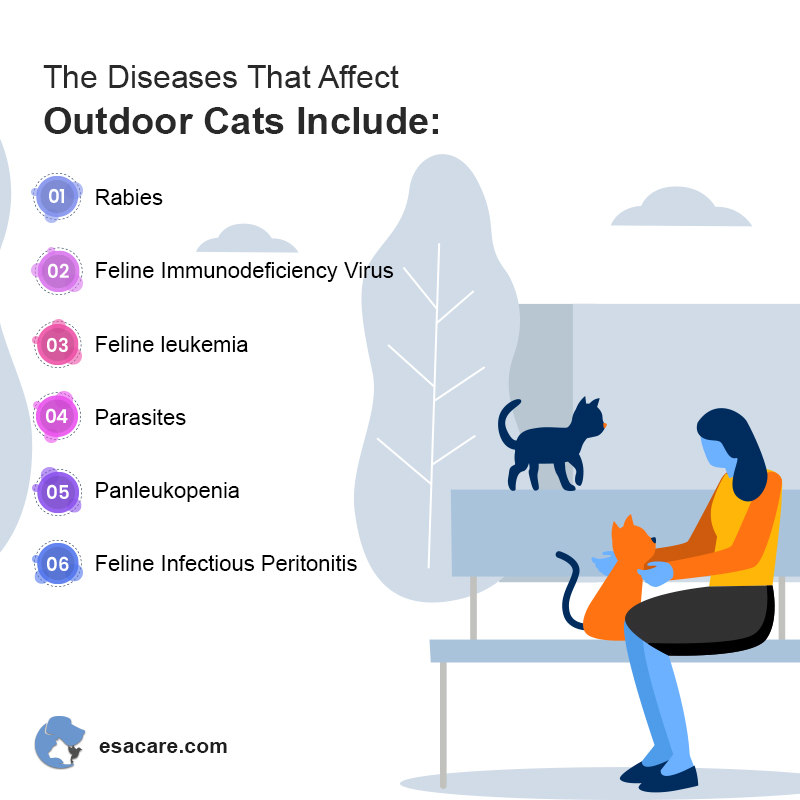

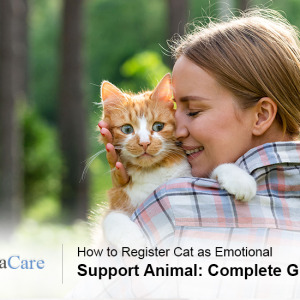




 347 5th Ave Suite 1402-112,
347 5th Ave Suite 1402-112,

Leave a Reply
Want to join the discussion?Feel free to contribute!